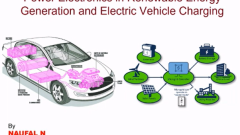On the Moon to Stay: Power Electronics Technology Challenges on the Lunar Surface - John H. Scott - APEC
John H. Scott, NASA Space Technology Mission Directorate, delivers his plenary presentation about the challenges facing power electronics when sustaining life on the surface of the moon.
Abstract: NASA’s Artemis Program seeks not only to return humans to the Moon for the first time since the 1970s but also to provide the technological basis for infrastructure that will enable permanent and expanding scientific and industrial exploitation of the Lunar surface. The primary purpose of this infrastructure is to generate and distribute power to a diverse and growing range of scientific and industrial assets, and the keys to success for this function are power management and control circuits that are highly reliable and maintainable for a decade of operation in the extreme thermal, radiation, and dust environment of the Lunar surface. While various combinations of wide band gap semiconductors, electronic devices, circuit topologies, and shielding schemes have been successfully developed for mission environments ranging from low Earth orbit to the Jovian system, power management technology has not been optimized to meet the full combination of mission requirements for the Lunar surface. To accomplish this, NASA requests the dedicated focus of the power electronics industry.
John H. Scott, NASA Space Technology Mission Directorate, delivers his plenary presentation about the challenges facing power electronics when sustaining life on the surface of the moon.
Abstract: NASA’s Artemis Program seeks not only to return humans to the Moon for the first time since the 1970s but also to provide the technological basis for infrastructure that will enable...
 Cart
Cart Create Account
Create Account Sign In
Sign In





